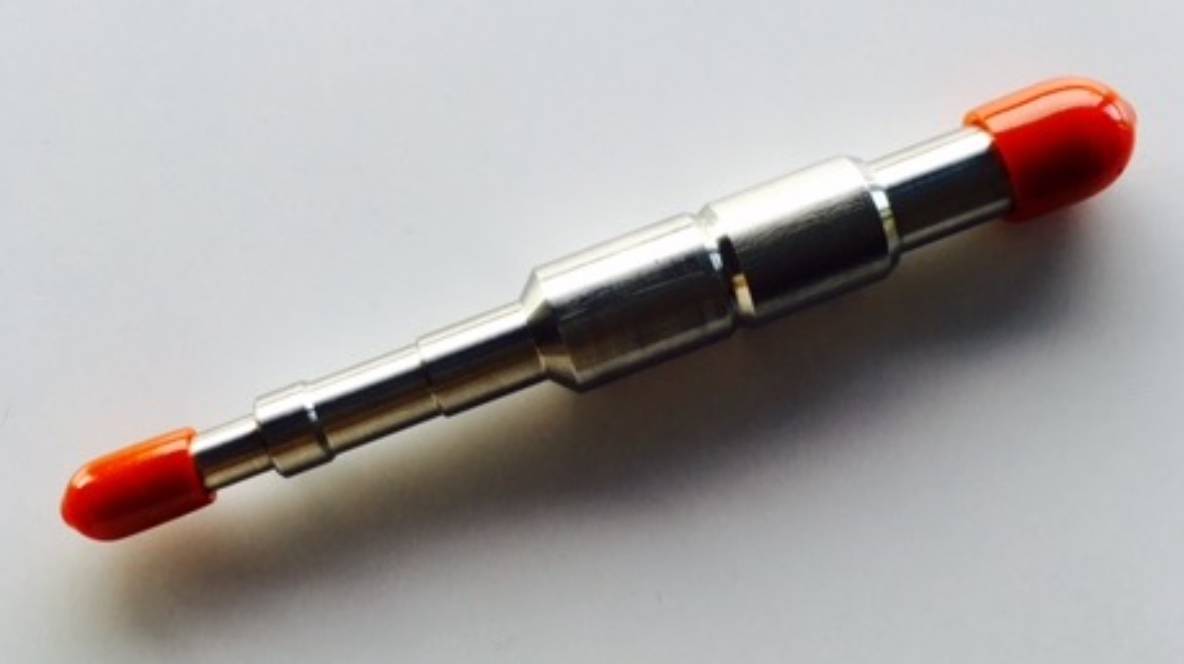Demystifying Light Output: The Power of Lightguide Simulators for UV Curing Efficiency
In UV curing applications, maintaining optimal light intensity is crucial for ensuring proper cure depth and product quality. However, directly measuring the output from a lightguide – a flexible fiber optic cable used to deliver UV light – can be challenging. Here’s where lightguide simulators come in – powerful tools that shed light on the true light output of your UV curing system, independent of the lightguide itself. This blog explores the functionalities, advantages, and applications of lightguide simulators, empowering you to optimize and maintain efficient UV curing processes.
What is a Lightguide Simulator?
A lightguide simulator is a precision optical tool specifically designed to mimic the reflective properties of a lightguide. It essentially acts as a substitute for the lightguide, allowing you to directly measure the UV light output from your curing lamp. Here’s why lightguide simulators are valuable:
- Accurate Lamp Output Measurement: By bypassing the lightguide, the simulator enables direct measurement of the UV lamp’s intensity, providing a clear picture of its true output capability.
- Early Detection of Lamp Degradation: As UV lamps degrade over time, their light output diminishes. Lightguide simulators help detect this decrease in intensity before it negatively impacts cure quality.
- Improved Process Control: Precise knowledge of the lamp’s output allows for adjustments to curing parameters, ensuring consistent and reliable results.
- Reduced Production Downtime: Early detection of lamp issues through lightguide simulators helps prevent unexpected failures and costly production downtime.
- Cost-Effective Maintenance Tool: Regular use of lightguide simulators promotes proactive maintenance and extends the life of your UV curing lamps.
Benefits of Using Lightguide Simulators for UV Curing
- Enhanced Product Quality: Ensuring optimal light output from the lamp translates to consistent and reliable cure depth, contributing to superior product quality.
- Improved Process Efficiency: Reduced risk of under-curing or over-curing due to precise knowledge of lamp output.
- Optimized Maintenance Schedules: Lightguide simulators enable proactive lamp maintenance, minimizing disruptions and optimizing lamp life.
- Reduced Operating Costs: Early detection of lamp issues prevents wasted materials and potential product rework, ultimately reducing operating costs.
- Increased Confidence in Your UV Curing Process: Lightguide simulators provide valuable data for validation and quality control procedures.
Applications for Lightguide Simulators
Lightguide simulators are essential tools for various industries that rely on UV curing processes:
- Electronics Manufacturing: Ensuring proper curing of adhesives, encapsulants, and coatings on PCBs and electronic components.
- Medical Device Assembly: Maintaining consistent cure depth for adhesives and bonding materials in medical device manufacturing.
- Printing Applications: Optimizing UV curing of inks and coatings in printing processes.
- Optical Component Manufacturing: Precise curing of adhesives used in the assembly of optical components.
- Automotive Applications: Maintaining consistent cure quality for adhesives and sealants in various automotive assembly processes.
Choosing the Right Lightguide Simulator
Selecting the optimal lightguide simulator requires considering several factors:
- Compatibility with Lamp Type: Ensure the simulator is compatible with the specific UV lamp used in your curing system.
- Wavelength Range: Choose a simulator that measures the relevant UV wavelength range for your curing application.
- Measurement Capabilities: Consider the desired level of detail, such as basic intensity readings or advanced features like spatial distribution analysis.
- Ease of Use: Select a simulator with a user-friendly design and clear instructions for accurate and efficient measurements.
Shine a Light on Optimized UV Curing
Lightguide simulators offer a powerful tool for UV curing efficiency. By enabling accurate lamp output measurement, they empower manufacturers to maintain optimal light intensity, ensure consistent cure quality, and ultimately achieve successful production outcomes. So, if you’re looking to optimize your UV curing processes and gain valuable insights into your lamp performance, consider incorporating lightguide simulators and illuminate a path towards a more efficient and reliable curing environment.
Incure Newgen Lightguide Simulator
5mm Lightguide Simulator (D Connector) Tests Lightguide Performance
